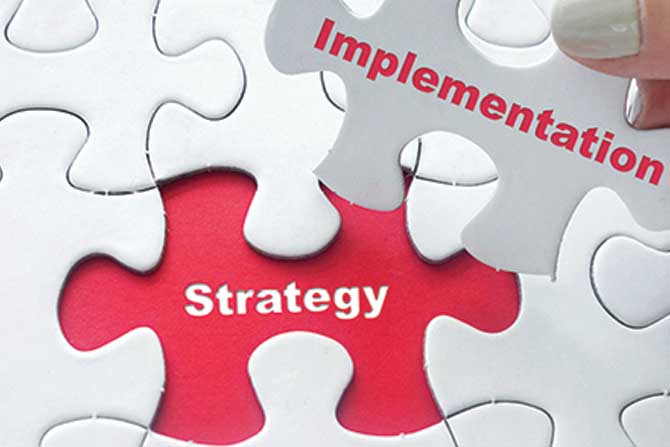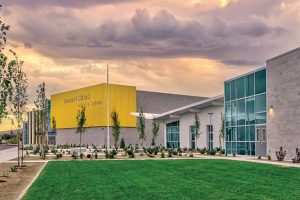By AIA Northern Nevada
While our entire country has wrestled with unexpected changes this year, AIA National has repositioned its efforts to meet our members’ needs through these uncertain times. Although there are many more initiatives not listed here but being developed by the AIA board of directors, strategic council and staff, we’ve come a long way in 2020 on many below. We’re also pleased to share that our very own 2020 AIA Northern Nevada President and longtime local and regional board member Nate Hudson, AIA, was recently elected to the AIA National board of directors! Congratulations Nate!
AIA NATIONAL ELECTION RESULTS
2021-2023 At-large Director — Nathaniel B. Hudson, AIA
(AIA Northern Nevada/AIA Nevada)
2021-2023 At-large Director — Ryan J. Gann, Assoc. AIA
(AIA Chicago/AIA Illinois)
2021-2022 Secretary — William R. Turner Jr., AIA (AIA Colorado)
2021 First Vice President/2022 President-elect — Daniel Stephen Hart, FAIA (AIA Austin/AIA Texas Society of Architects)
COMPONENT COVID-19 TASK FORCE
In May 2020, the Board approved revisions to the “Member Services Resource Task Force Implementation Plan.” In doing so, it authorized the funding of a component resilience fund (formerly referred to as the “Component Excellence Fund”) of $305,000 annually. The fund was to be used to respond to, assist and support the financial needs of components facing extreme financial hardship for various reasons, including those caused by weather or other natural disasters that overwhelm the components’ ability and capacity to meet member needs, force majeure incidents, or other extraordinary events that impact the viability and sustainability of components.
President Frederick appointed a task force to assess components’ financial health, set criteria and guidelines, and develop recommendations for short- and long-term solutions to address the viability of components during this unprecedented time.
The task force evaluated the financial health of components by examining data and association trends and best practices research and conducted outreach to the component network to gain insight into components’ capabilities to withstand economic instability during the crisis. To ensure the AIA’s health and sustainability at all levels, the task force identified circumstances for potential AIA support for components.’
Guided by the Task Force’s recommendations, the Board approved criteria as the basis for determining qualifications for component funding through the Component Resilience Fund in 2020.
2021-2025 STRATEGIC PLAN
Access the AIA Strategic Plan 2021 — 2025 here:
http://content.aia.org/sites/default/files/2020-07/2021-2025-Strategic-plan.pdf
After 18 months of work, our new strategic plan has been approved by the Strategic Council. Framing this plan is one overarching strategic priority revolving around a sea of change of AIA’s efforts and coalescing around the concept of human and ecological health. Following the overarching priority, the plan outlines its mission and vision with five supporting core values, four strategies and five imperatives.
PRIORITY: CLIMATE ACTION FOR HUMAN AND ECOLOGICAL HEALTH
Mission: AIA inspires and empowers architects to improve society and transform the world.
Vision: Drive positive change through the power of design and focused activism.
Core values:
Impactful: What we do matters and is relevant to our clients and society.
Transformative: We work for profound, lasting, positive change in the profession and society.
Visionary: We imagine a better future and act courageously and confidently to achieve it.
Inclusive: We believe architecture is for everyone, and we model deep collaboration and inclusion in all we do.
Innovative: We lead with creativity and insight.
Strategies:
Mobilize for impact: Focus and align programs, services, structures, and resources to develop innovative — solutions to the world’s most pressing challenges.
Educate and prepare: Equip architects for success by transforming architecture education, expanding access to the profession, cultivating a learning culture and developing leadership.
Advance knowledge: Knowledge is our currency. Generate, curate, and disseminate knowledge required for success.
Broaden the tent: Collaborate with design, construction, community leader and stakeholders. Organize and activate grassroots advocates.
Imperatives:
Emphasize climate action: Build impact by focusing on climate action and positioning architects as community leaders to drive the widescale adoption of practical design solutions that will rapidly address and mitigate the effects of climate change.
Catalyze equity: Foster diversity and inclusion in the profession, and advance the health, safety, and welfare of our communities through design and advocacy for lasting solutions in our built environments.
Optimize the role of the architect: Optimize architects’ presence and impact by equipping and preparing them to serve as conveners, collaborators, civic leaders, and change agents in developing and delivering solutions to society’s most pressing needs.
Revolutionize research and technology: Leverage emerging technologies to accelerate architecture’s progression to a knowledge-driven discipline and evidence-based, transformative solutions. Harness an intra/entrepreneurial startup mentality to foster rapid innovation.
Revolutionize architectural education: Make architectural education more responsive to emerging trends, more inclusive of underserved audiences, and more oriented toward the future role of the architect.
To ensure the AIA’s health and sustainability at all levels, the task force identified circumstances for potential AIA support for components.
AIA FRAMEWORK TO ADDRESS SYSTEMIC RACIAL INJUSTICE AND INEQUITY
Future Forward: Moving justice and racial and gender equity decisively from aspiration to action.
https://www.aia.org/pages/6303978-future-forward.
Harnessing our members’ passion and the broader design community, AIA is taking steps to advance racial justice and equity in our organization, profession and communities. It will do so in the following ways:
Dismantle barriers within all AIA systems: governance, honors and awards, internal policies, vendor selection, hiring/retention, and any business practice that intentionally or unintentionally contributes to injustice and exclusion (policies, practices and programs).
Expand inclusiveness and diversity within the profession through K-12 and higher education engagements and advocate for effective pathways into the profession. Expand the participation of racially and ethnically diverse populations, women and other underrepresented groups.
Conduct training, enhance education and knowledge dissemination and increase the number of high-quality new resources for the Board, staff, volunteers and members.
Ensure alignment with AIA 2021-2025 strategic plan.
PUBLIC OUTREACH
AIA Film Challenge: 97 films qualified for the 2020 AIA Film Challenge; winners, including the Grand Prize, runner-up, Third Place and People’s Choice, were announced at a virtual award ceremony on October 21st. See the winning films at
https://aiafilmchallenge.org/
The new website for Blueprint for Better has launched! Sign up now to commit to taking action against climate change and receive updates and resources on how we can all contribute to being part of the solution, together with all AIA members, civic leaders, and those in the public taking climate action. An extensive digital marketing campaign will also launch in January.
SUPPORTING EMERGING PROFESSIONALS
The Supporting Emerging Professionals Task Force, appointed in response to 2018 Convention Resolution 18-6, was charged to study categories of Emerging Professionals (EPs) and develop strategies, tactics, and tools to increase member value through marketing, assessment of current programs, development of new programs and incentives that will attract or retain EPs. The task force is focusing on four key thoughts.
- The changing association landscape;
- The need to strongly define the value proposition for membership among EPs;
- The role that cost, awareness and “gatekeepers” play in recruiting EPs.
- Component challenges to support program development.
The Task Force was asked to consider other drivers for AIA membership, specifically related to the value proposition for EPs as it exists today and how to redefine it in the future. This led to the issuance of a survey to EPs in late 2019. The survey research findings were used to generate nearly two dozen concepts to test through qualitative interviews with EP members and nonmembers, firm leaders and architectural program faculty. Based on the interviews’ feedback, the Task Force established final recommendations for AIA’s consideration and the Board approved the report for implementation.
REGIONS TO STATES
AIA Convention Resolution 18-7, “A Study of AIA Regions,” passed by a vote of 3,936 to 339 (201 abstentions) in 2018.
Motion Passed (April 2020 Board Meeting): “Having considered the final report of the Regions Task Force as presented at this meeting, the Board expresses its preference for the ‘Adaptive Reuse of State Components’ approach, and directs that the president take such actions as may be appropriate toward implementation.” This approach will eliminate regions from the AIA structure. The “Adaptive Reuse of State Components” model creates a direct connection of state components to AIA National through state-elected Strategic Councilors.
Current Provisions and Recommendations
Each state would elect one Councilor to the SC for a three-year term.
The geographical portion of the council will increase to 57.
The ex-officio representation will be reduced to AIA Immediate past president, AIA Pres-elect; AIAS rep; NAC rep; CACE rep; EVP/CEO.
Reduce the number of At-large reps from 10 max to 3 max.
Recommendations to address parallel interests
Diversity Pipeline and National Representation: Identify new opportunities and recommend processes to engage future AIA leaders within the new structure.
State-Level Nomination Processes: Research and identify existing models for leadership selection within single state regions. Explore what, if any, guidelines may be appropriate for a nomination process for states to elect members to serve on the Strategic Council.
Flexible Partnership Models: Identify best practices that allow for flexible consortia of components to engage around regional issues, events, etc.
Key Next Steps
Present model and rollout recommendations to the Strategic Council, December 2020.
Engage Constituent Groups (NAC, YAC, COF and SFRT) January — February 2021.
Grassroots presentation of approved model February 16 — 18, 2021
Finalize all elements and implement recommendations in preparation for member vote at A’21.
ARCHITECTS FOUNDATION
As AIA’s philanthropic partner, the Foundation leads efforts to attract, inspire, and invest in the next generation of architects to positively impact the world. Despite the global disruption, the Foundation is expanding and growing; it is a fiscal sponsor for one AIA chapter’s philanthropy. Below are a few of the successful 2020 initiatives developed:
We partnered with SmithGroup on the “Society’s Cage” exhibit on the National Mall. The Foundation is also engaged with HKS’ “Intern+Firm” match program. The Foundation continues to support scholarships and grants and to maintain The Octagon.
This year, a new “20 from 20” initiative was begun, seeking $20 from 20,000 donors to provide critical support to the Diversity Scholarship program and state and local architecture foundations. To date, approximately $40,000 has been received. https://architectsfoundation.org/donation/










